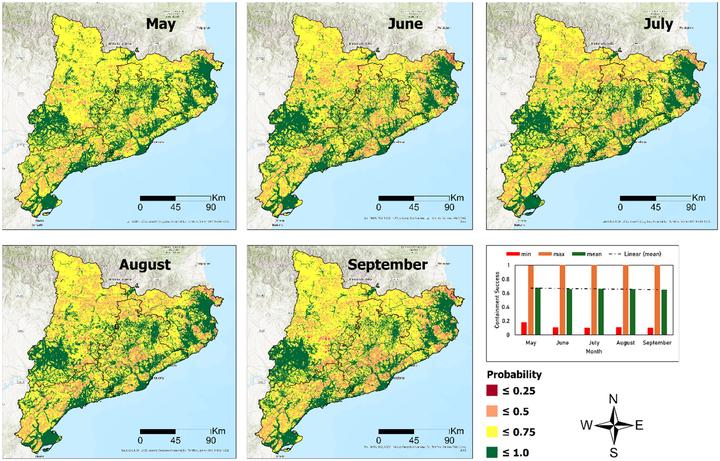A spatially explicit containment modelling approach for escaped wildfires in a Mediterranean climate using machine learning

Abstract
Wildfires are particularly prevalent in the Mediterranean, being expected to increase in frequency due to the expected increase in regional temperatures and decrease in precipitation. Effectively suppressing large wildfires requires a thorough understanding of containment opportunities across landscapes, to which empirical spatial modelling can contribute largely. The previous containment model in Catalonia failed to account for the crucial roles of weather conditions, lacked temporal prediction and could not forecast windows for containment opportunities, prompting this research. We employed a detailed geospatial approach to assess the spatial-temporal variations in containment probability for escaped wildfires in Catalonia. Using machine learning algorithms, geospatial data, and 124 historical wildfire perimeters from 2000 to 2015, we developed a predictive model with high accuracy (Area Under the Receiver Operating Characteristics Curve = 0.81 ± 0.03) over 32,108 km2 at a 30-meter resolution. Our analysis identified agricultural plains near non-burnable barriers, such as major road corridors, as having the highest containment probability. Conversely, steep mountainous regions with limited accessibility exhibited lower containment success rates. We also found temperature and windspeed to be critical factors influencing containment success. These findings inform optimal firefighting resource allocation and contribute to strategic fuel management initiatives to enhance firefighting operations.